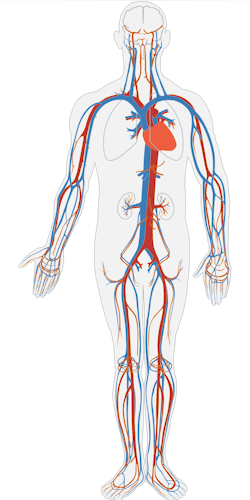The research study, published in the Journal of Clinical Investigation, is a culmination of over a decade of work slowly untangling the mechanism of how one fundamental process, which until now was mostly studied in bacteria and yeast, plays a role in maintaining a healthy lining of the vessels supplying blood to the lungs. If that process is broken, pulmonary hypertension sets in – the lining starts to wear down, and vessels begin to grow inward, limiting the blood flow and increasing strain on the heart.
Because vessel lining is so important for maintaining the integrity of the vessel, many experts think that a disturbance of that cell layer is a critical step that initiates disease. But how and why those cells become damaged in the first place is a mystery yet unsolved.
They found that a small population of cells in the vessel lining are lacking a protein called frataxin, which regulates formation of molecular clusters containing ions of iron and sulfur that are important for fundamental cell processes, such as DNA repair and generation of energy. In the absence of frataxin, scientists observed, the cells quickly lose their ability to divide and become senescent, releasing molecules that drive inflammation and cause vessel damage.
They also found that people suffering from Friedreich’s ataxia – a neurodegenerative disease caused by genetic frataxin deficiency – have abnormalities in their lung vessels that are consistent with changes observed in pulmonary hypertension.
“It took us some detective work to get there,” said Chan. “Historically, not many places around the world have been banking lung tissues from patients with Friedreich’s ataxia, but eventually we found samples from three patients and confirmed that all of them had signs of substantial changes in the pulmonary vessels.”
The latter suggests that clinicians might have missed a whole group of people at risk for developing pulmonary hypertension, and that drugs that can restore levels of frataxin could be useful for treating pulmonary hypertension in a broader patient population.
“As a future physician-scientist, I aspire to make discoveries that will improve people’s health and well-being,” said lead author of the paper Miranda Culley, an M.D.-Ph.D. student at Pitt’s School of Medicine. “We are hoping that this work pushes the field to recognize the importance of frataxin and iron-sulfur clusters in maintaining healthy blood vessels, and that, more broadly, our progress brings us one step closer to a cure for patients who have been waiting for decades.”

